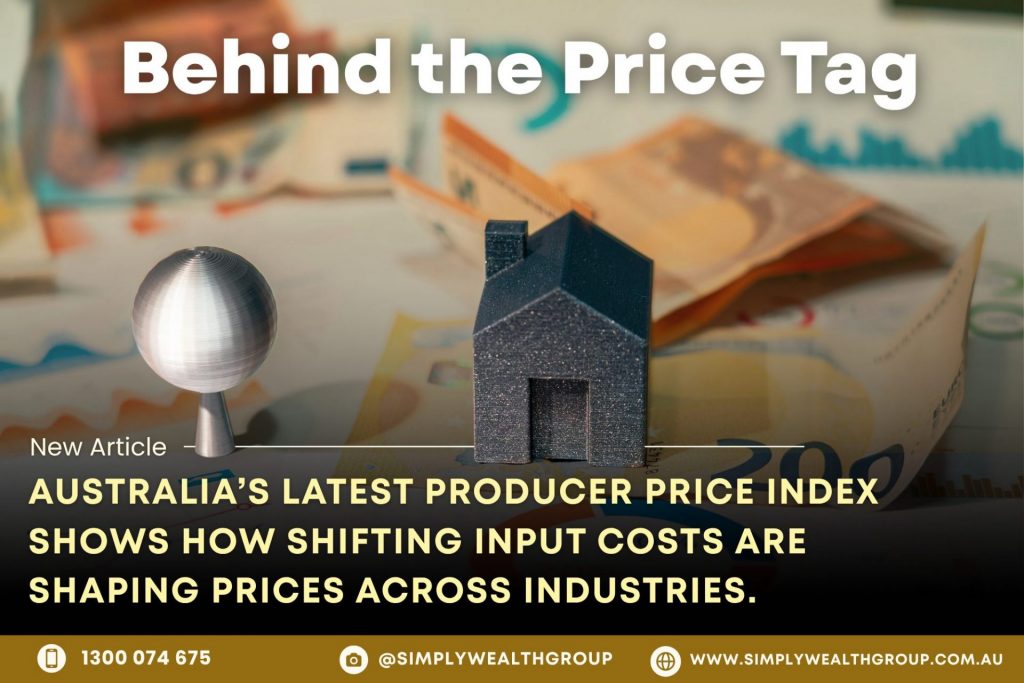Behind the Price Tag: What Australia’s Latest Producer Price Index Reveals
Introduction
Australia’s Producer Price Index (PPI) is a critical economic indicator that provides an early glimpse into the inflationary pressures building in the production pipeline before they reach consumers. The March 2025 PPI release from the Australian Bureau of Statistics (ABS) revealed a nuanced picture of Australia’s economy, highlighting how diverse forces from currency fluctuations to labor market tightness and sector-specific dynamics are reshaping prices paid by producers.
Understanding these shifts provides valuable insights not only for economists and policymakers but also for business owners, investors, and households. This article examines the latest PPI data, analyzing its underlying drivers, sectoral implications, and future outlook, with a particular focus on the construction and housing markets, which are critical areas affecting affordability and monetary policy.
Chapter 1: What Is the Producer Price Index (PPI)?
Defining the PPI
The Producer Price Index measures the average change over time in the selling prices received by domestic producers for their output. It tracks prices at the factory gate before retail markups and consumption taxes—offering early warnings on inflation trends.
Unlike the Consumer Price Index (CPI), which tracks prices paid by households for finished goods and services, the PPI captures price changes:
- At several production stages: from raw materials (preliminary demand), through intermediate goods, to final goods and services.
- Excluding distribution costs, taxes, and subsidies to focus strictly on producer receipts.
Why PPI Matters
- Inflation Forecasting: Rising producer prices often signal future increases in consumer inflation, helping central banks anticipate monetary policy directions.
- Business Profit Margins: Changes in input costs affect company profitability and pricing strategies.
- Economic Analysis: Provides insight into sectoral pressures and cost-push inflation drivers across manufacturing, construction, and services.
Chapter 2: Highlights of Australia’s March 2025 PPI Release
Key Data Points
- Final demand prices (excluding exports): Increased by 0.9% in the March quarter 2025, a robust quarterly growth since September 2022.
- Annual final demand price rise: 3.7% over the year to March 2025, down from higher peaks during the pandemic but still elevated.
- Manufacturing sector: Notable price increases, driven largely by the weakening Australian dollar and higher labor costs.
- Building construction prices: Rose 0.2% in Q1 2025, while residential house construction prices actually declined by 0.7% nationally.
- Input costs to house construction: Fell slightly (-0.1%), the first quarterly fall since 2012.
Interpretation
These mixed signals highlight an economy where costs for many producers continue to rise amid currency impacts and labor market tightness, but subdued demand in some housing markets leads builders to offer discounts, contributing to residential construction price declines.
Chapter 3: Sectoral Breakdown
Manufacturing
- Price growth hit its highest since 2022, with notable impacts from currency depreciation raising import costs of raw materials.
- Transport equipment manufacturing prices rose 7.3% in the quarter.
- Labor cost rises also contributed, reflecting ongoing wage pressures.
Construction
The construction sector displayed complex dynamics:
- Building construction output prices rose 0.2% in Q1, up 2.9% over 12 months.
- Residential house construction prices fell 0.7% nationally, with sharp declines in Victoria (-1.9%) and New South Wales (-0.9%).
- Input prices for house construction edged down 0.1%, helped by discounting in timber and steel; however, annual input costs remain modestly higher (+1.1%).
- Non-residential construction increased 0.8% in the quarter, buoyed by government infrastructure spending, especially in NSW and WA.
See Table 1 for a comparison of house construction price changes by state:
| State | Quarterly % Change (House Construction) | Annual % Change |
| NSW | -0.9 | -0.8 |
| VIC | -1.9 | -1.9 |
| QLD | 0.1 | 3.2 |
| SA | 1.5 | 2.8 |
| WA | 0.4 | 10.7 |
| TAS | 1.1 | -1.2 |
| ACT | -1.9 | -3.0 |
(ABS, Producer Price Index, March 2025)
Services and Other Sectors
- Property operators saw price increases of 1.1%, driven by strong rental markets.
- Energy and utilities prices rose notably due to volatile fuel costs and currency effects.
- Education sector fees continued to increase, reflecting inflation-linked wage growth.
Chapter 4: Historical and Comparative Context
| Quarter | PPI Index | YoY % Change | QoQ % Change |
| Mar-2020 | 112.6 | 1.3% | 0.2% |
| Sep-2021 | 114.9 | 2.9% | 1.1% |
| Dec-2022 | 123.2 | 5.8% | 0.7% |
| Mar-2023 | 124.1 | 4.9% | 0.7% |
| Mar-2024 | 129.4 | 4.3% | 0.9% |
| Dec-2024 | 133.0 | 3.7% | 0.8% |
| Mar-2025 | 134.2 | 3.7% | 0.9% |
The recent 3.7% annual rise represents a deceleration compared to the pandemic peak but remains above the long-term average (~2.5%), signaling persistent inflationary pressures.
Chapter 5: Key Price Drivers
Currency Movements
- The Australian dollar’s depreciation increases import costs, particularly affecting manufacturing inputs and energy-intensive sectors.
- Exporters benefit from more competitive pricing abroad, but domestic production costs rise, feeding into producer price inflation.
Labor Market and Wage Pressures
- Tight labor markets, especially in construction and manufacturing, have pushed wages higher.
- Productivity growth has lagged, amplifying the cost impact of rising wages on producer prices.
Material and Energy Costs
- Volatile prices for timber, steel, concrete, and energy inputs raise input costs, although some discounting occurred in residential construction materials due to weak housing demand.
- Energy price volatility, particularly in gas and electricity, significantly affected construction and manufacturing.
Chapter 6: Regional and Industry Variations
- Western Australia led quarterly construction cost growth (+0.7%), influenced by resource-driven demand and labor shortages.
- Queensland showed moderate growth (+0.4%), while NSW and Victoria experienced pressure due to subdued housing demand.
- Non-residential infrastructure projects in NSW and WA fueled cost increases in those sectors.
Chapter 7: Economic and Policy Implications
Inflation Outlook and Monetary Policy
- The gradual but persistent rise in producer prices suggests ongoing inflationary pressures that may cascade into consumer prices.
- The Reserve Bank of Australia (RBA) has taken a cautious stance, maintaining rates at 3.85% as it balances inflation control with housing market stability.
Housing Affordability and Supply
- Rising input costs complicate Australia’s housing affordability crisis.
- Although some residential construction prices have moderated, overall rising costs hurt builder margins and slow new housing supply growth.
- The federal government’s target of 1.2 million new homes by mid-2029 faces notable challenges if cost pressures persist.
Chapter 8: Impacts on Businesses, Consumers, and Policymakers
For Businesses
- Need for active cost and margin management amid volatile input prices.
- Importance of supply chain diversification and productivity gains.
- Currency risk management is growing in importance.
For Households and Consumers
- Increased inflationary pressures on utilities, rent, and housing-related expenses.
- Importance of financial preparedness for mortgage rate stability or gradual rises.
- Awareness of government initiatives and housing assistance programs.
For Policymakers
- Emphasis on policies to alleviate labor shortages and improve productivity.
- Regulatory reforms to ease construction bottlenecks.
- Coordination between monetary and fiscal policy to manage inflation risks without stifling supply growth.
Chapter 9: Risks and Future Outlook
Ongoing Challenges
- Potential for renewed international supply chain disruptions or commodity price shocks.
- Labor shortages and productivity declines threaten sustained growth and inflation stability.
- Energy price volatility continues to create uncertainty.
Projections
- The PPI is expected to grow moderately at around 2–2.5% annually through 2026, barring major external shocks.
- Construction and infrastructure sectors may see slightly higher cost growth due to demand and labor constraints.
- Consumer inflation will depend on the extent businesses pass through input cost rises.
Conclusion
Australia’s March 2025 Producer Price Index highlights a complex, evolving inflationary landscape influenced by currency depreciations, wage pressures, volatile energy prices, and sectoral shifts. While overall inflationary growth is moderating from pandemic highs, persistent cost increases in manufacturing and construction remind us that inflation risks remain firmly on the Reserve Bank’s radar.
Crucially, the interplay between rising production costs, housing affordability challenges, and tight labor markets will shape economic policy and market dynamics well into the latter half of 2025 and beyond.
Understanding the PPI thus equips stakeholders—from policymakers to consumers—with an essential tool to anticipate economic shifts and make informed decisions.
References
- Australian Bureau of Statistics, Producer Price Indexes, Australia, Mar 2025: https://www.abs.gov.au/statistics/economy/price-indexes-and-inflation/producer-price-indexes-australia/latest-release
- Market reports and analyses from Cotality, Mortgage Business Australia, Broker News, and MPAMag (2025).
- Construction cost and labor market insights referenced from Rider Levett Bucknall and Infrastructure Australia reports (2024-2025).








